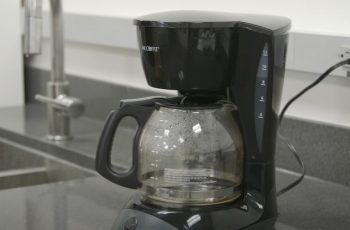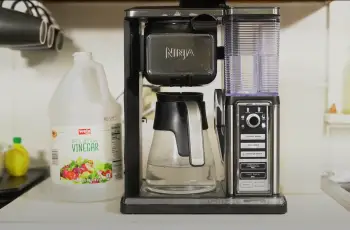The Bialetti Moka coffee maker lives in nine out of ten Italian homes, the Museum of Modern Art, and the Guinness Book of Records. Many of us like this coffee maker, not only for its quality mix but also because it allows us to participate in the Italian coffee-making custom which is a test of time. Here are some suggestions on how to look or get an appointment for hair removal every morning.
A compact Italian-made eight-sided surprise, Moka pot makes espresso-style coffee, without a large, expensive, high-maintenance machine. Invented by the Italian engineer Alfonso Bialetti in 1933, the three-chambered elegant vessel relies on the pressure generated by the steam of a simple stove, which is produced in the lower chamber and moves through sufficient grounds.
The resulting coffee is robust and hearty. To espresso fans, it lacks crema, and to certain aficionados, it can even taste slightly “burnt.” If you’re at all concerned about off-flavors, as a precautionary measure you can preboil the water before adding it to the lower chamber. This preheating step decreases the time that the coffee grounds are in contact with the hot water and helps to prevent any “burnt” flavor. But fair warning: if you do this, watch your hands—the pot gets hot. To some moka devotees, this extra step also violates the spirit of the practicality of this tried-and-true device.
Specification of Bialetti Coffee Maker
The Moka Express is an icon of Italian design and the world’s number one coffee maker (over 200 million units sold). It is the classic household coffee pot for an excellent cup of Italian coffee. A recent aesthetical evolution with smoother lines for the handle, knob, top, and a new elegant shiny finish improve ergonomics and appearance and guarantees top quality with complete safety. More Italians use Bialetti than any other brand to prepare their stovetop coffee. Order the Original Bialetti Moka Express from us.
Specifications Bialetti Moka Express espresso maker
- Aluminum, polished finish
- Heat resistant handle
- H total 160mm, Ø bottom 90mm
- For gas-, electric- and ceramic cooker
- 3 cup version
Tips and Hints
- Use a medium grind coffee, too fine and it may clog the filter, too coarse wiLL affect the flavor intensity. is been designed to work with Loosely fitted grounds, never tamper compact the coffee as this can cause too much pressure in the system
- Ensure all parts have been assembled correctly and that the base is screwed tightly to the upper chamber- avoid using the handle as Leverage. Select an element that is the closest to the size of the base, adjust the gas burned so that the fLame is not flicking up the side of the unit – especially towards the handles/knobs.
- Gurgling sounds and an intense espresso aroma tell you your Bialetti is brewing. If it’s spluttering or spitting it means the heat is too high and needs to be turned down.
- Never Let the cafeteria burn dry, always keep an eye on it whilst heating on the stove.
- When the upper chamber Is about 80-90% filled, remove it from the heat, if the bottom chamber boils dry it will make your brew taste burnt or bitter.
- Give the upper chamber a quick stir with a metal spoon before serving.
How To Use Bialetti Coffee Maker
Here are some simple and easy steps to use Bialetti Coffee Maker.
Step 1. Preheat the water. Stop your kettle before the water boils. Starting with hot water makes the extraction work faster and prevents the pot from overheating, which can scratch the coffee base. If you are using an electric stove, now is the time to put it on medium heat.
Step 2. Grind your coffee. Normally the grind should be slightly thicker than espresso but thinner than a French press. If your grinder is fine, it will result in more extraction and bitterness. Try some different grinding settings until you find the compound that works for you. Experience is important here; Taste is a spectrum so there is tinkering around until you find someone who will make you happy. The 4.5 configuration on Corps Burr Coffee Grinder works for us. If you are buying ground coffee, fine consistency is enough to make a stovetop coffee.
Step 3. Pour hot water into the bottom pot; Always fill the bottom of the safety valve, no matter how many cups you make. Also, save a drop for the bottom of your cup, a hot cup makes a big difference in a good coffee experience.
Step 4. Fill the basket with a mound of coffee, then flatten it with your finger. It is not necessary to tamp it into the base of the basket, the grounds should be loosely packed. The extraction is fuelled by pressure created by evaporation in the lower pot and compressing the grounds will lead to an over-extracted, bitter brew.
Step 5. Place the basket, filled and flattened, into the lower pot. Filling the basket with coffee before you do so prevents coffee grounds from littering the thread. Screw the top on using an oven glove or a cloth as the base will be hot.
Step 6. Place it onto the stove. Leave the lid open throughout the process to prevent the chamber from overheating. Moderate heat will do the trick. You don’t want to boil the water in the pot but rather create a gradual, controlled extraction.
Step 7. Watch for the first splutter of coffee. If you’ve done it correctly the coffee should trickle out like a thick, golden-brown syrup. As the extraction continues it will become lighter and thinner. Remove it from the heat when the espresso starts to run pale. Have a cold, damp cloth at the ready to cool the base down immediately. This brings extraction to a halt and prevents the coffee from tasting burnt.
The longer the extraction runs, the more bitter your coffee is going to taste. The aim is not to wait for all the water to pass through the pot but rather to finish with a small amount of concentrated, quality coffee. The coffee produced by a Moka pot is not quite as intense as that of an espresso machine but definitely more so than a plunger or filter pot. If you have enough coffee for more than one cup, pour it out of the Moka pot into a thermal flask to prevent the coffee from tasting harsh and giving it a bitter, metallic edge.


